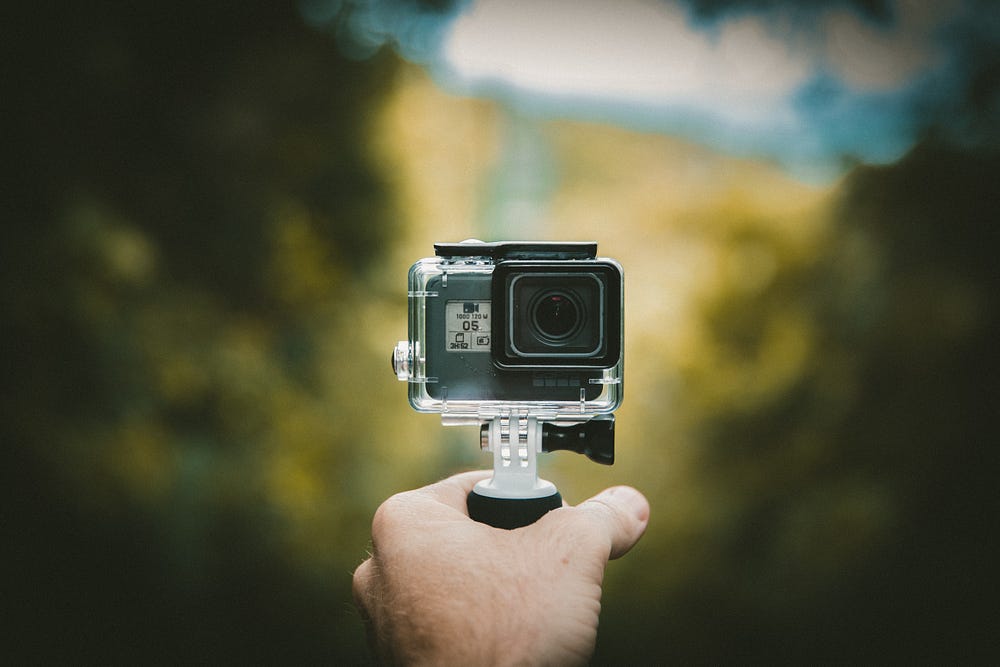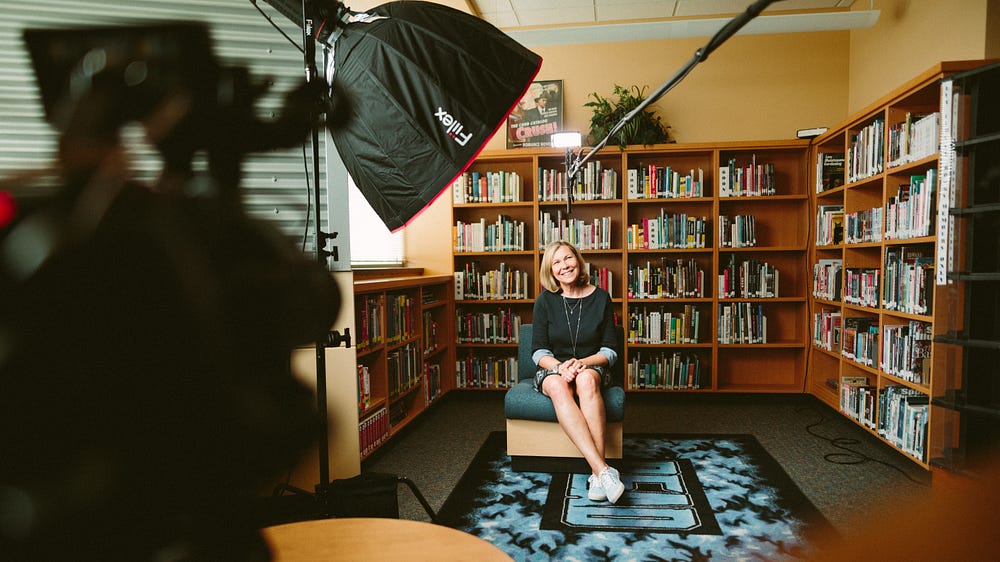4 months before getting hired, I had never been paid to make a video.
Video cameras were always intriguing to me. But beyond making skateboarding videos as a kid, I didn’t have any real video production experience until I decided to pursue it full-time in the middle of 2017.
At the outset, all I had was a little Canon T6i (great starter camera) and a vague idea of how the industry worked.
Newton’s first law of motion states that an object at rest remains at rest, or if in motion, remains in motion at a constant velocity unless acted on by a net external force.
This is why starting from scratch is so difficult. When you are at zero, there is no external force pushing you towards progress. That force is driven solely by your self-initiated effort over time.
Every creative field contains a Feedback Loop. The bigger and better your portfolio, the more clients you will attract. And the more clients you attract, the more opportunities you’ll have to add to your portfolio. Before either of these pieces is big enough to feed the other, you must add to them separately and, unfortunately, for free.
At this point, I had no customers, no leads, and nothing in my portfolio. My only option was to take that very first, daunting, lonely step forward and put out a video.
I Started Cranking Out Videos
I started vlogging because it seemed like a fun way to document my story, add to my online portfolio, and practice making videos. My first piece was mediocre at best. My second piece was slightly better, and the improvement continued with each new video.
Having a mediocre portfolio is better than having nothing at all.
As long as you keep adding to it, it will slowly become less and less mediocre. It didn’t matter that I had no paying clients yet. I kept putting out videos. This is a long-term game and there are no quick fixes.
Because I was staying busy working on my craft and developing my style, when I met somebody new I could confidently tell them that “I make videos.” This sounds better and inspires more self-confidence than saying “I’m planning to start a video company.”
For several months I put out at least 4 videos per week. I built up a solid backlog of content on YouTube and Facebook that I could point to as proof that I was creating things.

Vlogging consistently helped me chisel my own style. Since it was fun and I was ultimately doing it for myself and not for clients, the process helped me develop a video format that worked for my personality. My own creative freedom was in the driver’s seat. I used a certain type of music, certain types of transitions, and told my story in my own way so that it was discernible and unique.
I Contacted a Mentor
The core of success in any creative field maps from the two pieces of our aforementioned Feedback Loop: paying clients and a killer portfolio.
I’m a learn-by-doing type of person. I learn best by watching someone do what I want to do and then jumping in to try it myself. Naturally, one of my first steps was to reach out to somebody in my field who had a good handle on these two pieces and a well-oiled Feedback Loop.
I used these two things as a compass to locate a mentor.
Signs of a killer portfolio:
- At least a couple thousand Instagram and Facebook followers
- Upwards of 100+ videos on a Vimeo or YouTube page
- A well-produced demo reel
- A great looking website with sample content on it
Signs of paying customers:
- Plenty of good reviews on the business Facebook page
- Customer logos and testimonials on the website
- Branded videos on a Vimeo portfolio
I searched around for “video production companies in Charleston, SC” and found Vive Media. They checked all the boxes. Looking at their online profiles, it seemed like they were doing what I wanted to be doing and were a couple years ahead of me. Perfect!
The abstract goals I had in my head began to find their form in a real, practical model.
When I first reached out to Matt, the founder, I was not set on being hired — I simply wanted to build a mutually beneficial relationship and put myself around somebody who was a couple years ahead of me. I knew I would soak up habits, mindsets, and tactics that would speed up my development, and I knew that in time I would identify a spot to provide value for him.
I found him on Facebook and sent him this: “Hey Matt, I’ve been checking out Vive Media online. I just left my job and am beginning a deep dive into photo/video. It looks like you’ve built up a pretty cool company and I’d love to hear your story. Can I buy you a coffee this week or next?”
I was honest with him about what I wanted and I had a clear ask that wasn’t too forward. I didn’t go straight to asking to work with him or to teach me anything. It’s a long-term game.
We had coffee, I told him what I was up to, asked about his company beginnings, and we decided to keep in touch. I kept focusing on creating my own content.
While his professional portfolio was miles ahead of mine, he didn’t have any YouTube videos that were more personal like I did. The next time we met up, he asked me about my YouTube strategy and how I approach documenting my story.
I didn’t need to sell him on my understanding of this topic because I had already demonstrated my value by consistently creating videos using my own unique style. My portfolio, while new and not generating income yet, spoke for itself. Visiting my YouTube channel told him everything he needed to know. It showed that I was someone who knew how to consistently document a personal story using videos.
I let myself create what made sense to me, and the result was a unique body of work that resonated with a small group of people.
I positioned myself to offer value — then did it again and again and again.
I was by no means the vlogging “industry guru,” but I was 90% ahead of the average person by simply doing it (as opposed to talking about it or planning to do it). I had successfully positioned myself to provide value for someone who was several years ahead of me in my industry.
The second time Matt and I met up, he told me enjoyed watching my videos, noticed my unique style, and had a desire to create that for himself. I gave him all the tips I had from my experience documenting my story on YouTube. He mentioned that he wanted to document some of his projects behind-the-scenes to show people his process and connect with them on a more intimate level. I encouraged him to go for it.
During every meeting I made it very clear that, while I wasn’t actively searching for an apprenticeship, I was determined to learn as much as I could and that I admired his work. I offered to assist him for free on any projects he might need a hand with.
Several days later, he asked me if I wanted to help him shoot a YouTube video. I happily agreed, and we had a blast shooting the video.

Weeks later he asked me for help on a video interview project. Again, I happily agreed because the more I can work around someone who has more experience than I do, the better. This time he paid me for my time.
By working together, we each discovered more about our own strengths and weaknesses and how they complement each other. For example, Matt has a better eye for production quality but I’m strong when it comes to interacting with people and asking good questions in a video interview. These two strengths work very well together.
I continued offering to do anything he needed help with. It turns out he had a big project coming up that required a lot of emailing and scheduling. He also wanted some more behind-the-scenes content (similar to my vlogs) done for some of his bigger projects, and needed assistance with shooting and editing.
We eventually turned our working relationship into an official paid part-time apprenticeship.
———-
You can’t just go up to someone who is more successful than you and ask them to be your mentor. This is a cost to them and, frankly, a waste of their time.
If you want an apprenticeship or a mentor, you must carve out your own way to be valuable to them. Luckily, you have an advantage that you might not be aware of: a low opportunity cost. Zak Slayback has a great article on this concept as it is applied to the professional world.
Having a low opportunity cost means that you can justify spending your time doing lower-value tasks more than a person with a higher opportunity cost can.
Because Matt had several years of running a video production company under his belt, his portfolio, relationships, and tacit knowledge in the industry earned him a higher opportunity cost than mine. That means I had a unique opportunity to do lower value tasks for him like scheduling and assisting on shoots.
My low opportunity cost paired with my consistency publishing content turned my creative hobby into a paid apprenticeship within 4 months.
If you take any piece of advice away from this story, it should be to create your own content. Remember, this is a long-term game. Don’t rush to be paid if you’re not quite there yet. If you focus on consistently doing your thing, opportunities will reveal themselves to you. You will carve out your own style and people who value what you create will notice. The Feedback Loop will start rolling. Just keep creating.
(Featured photo by Jakob Owens on Unsplash)